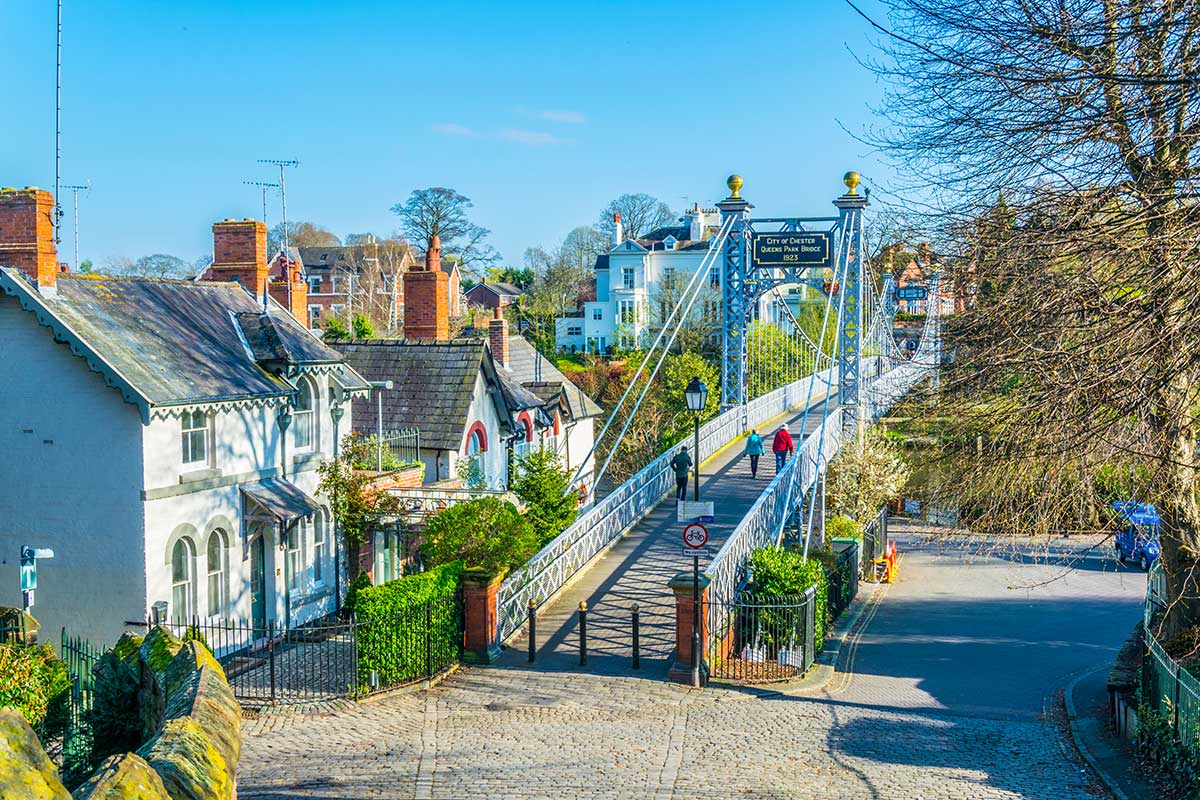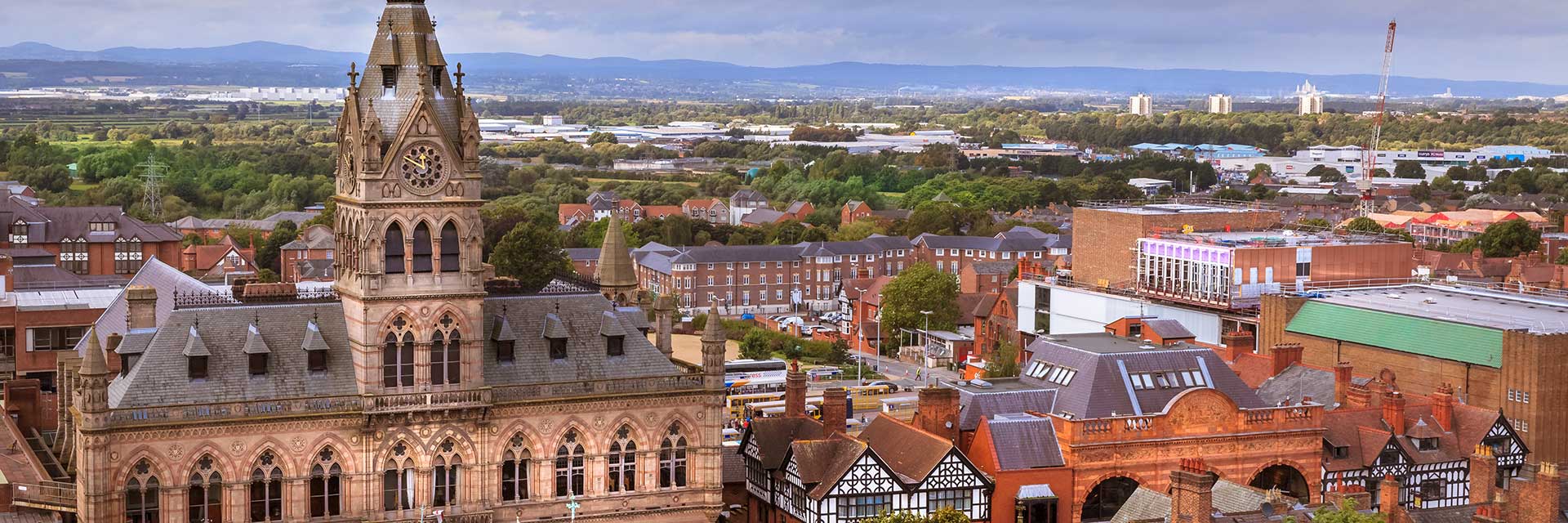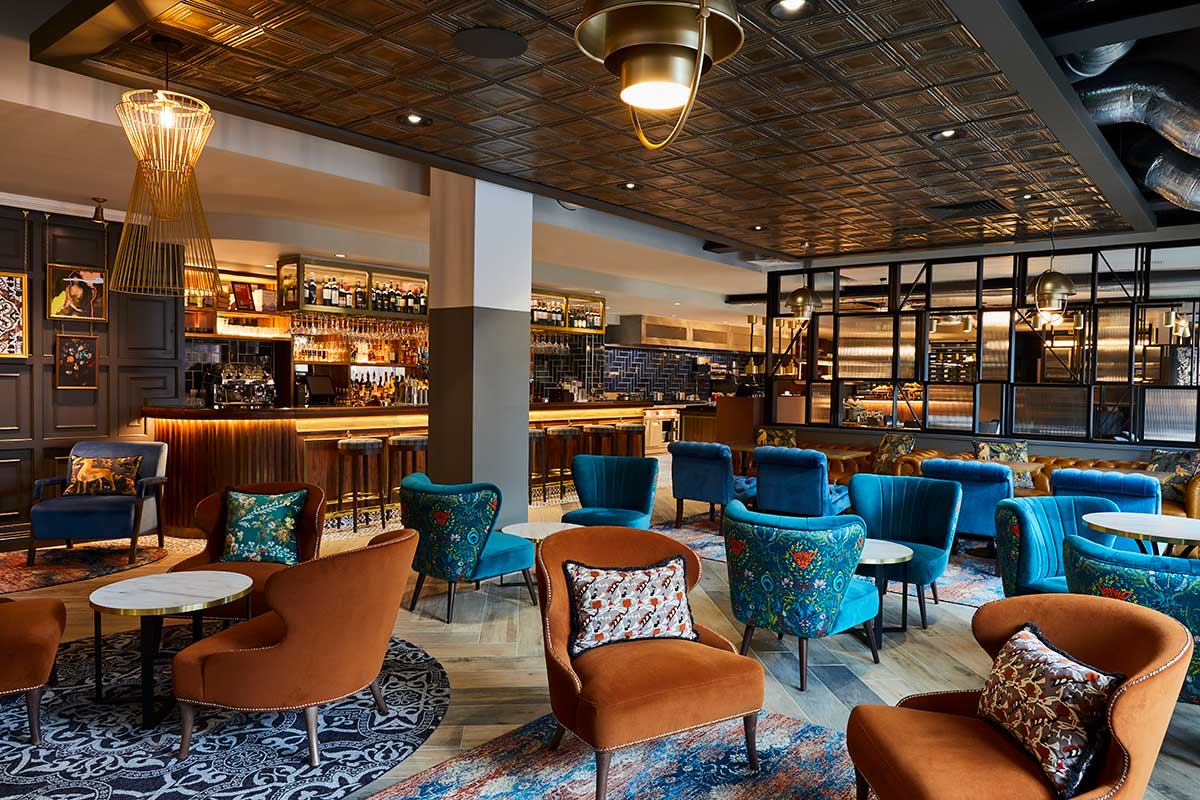Where stories come to life
The defensive walls that encircle the bewitching city of Chester are approximately 2,000 years old. An awful lot can happen in two millennia – the Norman Conquest, the Civil War and the Industrial Revolution all came and left their mark on this northern English town. It’s a storied past that Chester wears with pride while forging an exciting future.
With a vibrant arts scene and countless bars, restaurants and nightclubs, not to mention a regeneration project that will soon transform part of the city centre, this neighbourhood is positively buzzing.
History
Each new chapter in this neighbourhood’s epic history has brought with it architectural traditions, and every Tudor building, half-timbered house and medieval construction in this beautiful place tells its own story. The city celebrates and commemorates these tales, bringing them to life for residents and visitors through popular parades, festivals and cultural events. Indeed, Chester is a cultural hub, a town that sparks and celebrates all forms of creativity.
A two-mile circular stroll following the sandstone walls is the perfect way to become better acquainted with our neighbourhood and its many layers of architectural heritage.
The city walls – the oldest, longest and most complete in Britain – were built by the enterprising Romans, who sought to protect legendary fortress Deva Victrix. These walls were later reinforced by the Saxons to ward off Viking raids, and they stand today as a symbol of Chester’s illustrious past.

“A rich history and diverse architectural heritage makes Chester a neighbourhood full of stories.”
The city walls
Begin your wall walk at King Charles’s Tower in the north of the city. If you climb to the top of the tower you’ll be rewarded with panoramic views of the ancient city and the surrounding countryside. Walk the wall in an anticlockwise loop and you’ll soon pass Chester Racecourse, the oldest racecourse still in use in the UK, dating back to the reign of King Henry VIII. It’s where ‘gee-gees’, the slang term for horses, comes from – the 16th-century mayor of Chester was called Henry Gee – and if you walk the wall at the right moment you can watch the races for free. After passing Chester Castle, founded by William the Conqueror in 1070, you’ll reach the Roman Gardens, home to fragments of the original Deva Victrix fortress, which were unearthed in excavations during the nineteenth century.
After a full circuit of Chester’s walls, you’ll want to know what’s so special about this city that the Romans, Saxons and Royalists were so doggedly determined to defend. It won’t take long to find out.
At the very heart of our district is the splendid Eastgate Clock, the second-most photographed in the UK after Big Ben, designed by the great local architect John Douglas for Queen Victoria’s diamond jubilee. It’s the dazzling centrepiece of a highly desirable gem of a neighbourhood, a place boasting a glorious hodgepodge of architectural styles.
While many buildings are in the Tudor style, only a handful actually date back to the 16th century. Chester was at the centre of the Black-and-White Revival movement, which saw Victorian architects resurrect the Tudor style of placing white panels between black wooden frames. The grade two-listed terrace on St Werburgh Street, also designed by John Douglas, is considered the pinnacle of the movement.
Yet this isn’t the city’s most famous architectural feature. That would be the Chester Rows, a series of covered walkways serving a second row of shops above street level, a two-tiered medieval gallery that’s unique to Chester. Some of the shops found behind these layered 13-century facades have been family-owned and operated for well over a century, and many are blessed with magnificent stone ceilings.


“A rich history and diverse architectural heritage makes Chester a neighbourhood full of stories.”
A rich history
Due to its rich history and diverse architectural heritage, Chester is a neighbourhood full of stories, and it keeps these tales alive through drama, theatre and parades. Every December, Chester’s residents celebrate Saturnalia, a Roman pagan festival in honour of the god Saturn. For one night only, soldiers from the 20th Legion of Deva Victrix fill the streets with flaming torches before retiring to the pub in their clanking fancy dress. It’s not the only Chester costume party worth getting dressed up for, though. At the Winter Watch parade, lantern-carrying residents form an after-dark medieval procession, while at the Midsummer Watch event, a quirky celebration of the Summer Solstice, you can expect to see droves of pirates, unicorns, dragons and camels.
Chester’s commitment to keeping good stories in circulation is epitomised by the Mystery Plays, one of the biggest community theatre events in Europe. Based on stories from the Bible, mystery plays were performed across Europe in the 13th century. Chester revived the tradition and now every five years a group of community theatre-makers, with the help of professionals, perform in the nave of the stunning Chester Cathedral. But if you miss out on 2018’s production, taking place from June 27th to July 14th, you don’t have to wait until 2023 to watch quality theatre in Chester – the Grosvenor Park Open-Air Theatre presents glittering productions of much-loved plays for eight weeks every summer.
And if this doesn’t coincide with your visit, don’t worry – the team behind the open-air theatre also runs Storyhouse, a £37-million theatre, library, restaurant and cinema that opened in May 2017. It’s one of the country’s top arts venues and a place where creativity is encouraged and nurtured. Every November the venue hosts the Chester Literature Festival, which hosts leading novelists, poets, politicians and performers, as well as many events for children.
The Storyhouse is a taste of things to come. A £120 million regeneration project will transform Chester’s business district by 2028. The Northgate Development, which will bring many new restaurants, department stores and a cinema to the northwest quarter of the city centre, forms part of what’s been nicknamed the ‘Chester Renaissance’ – the long-term effort to make the city a hub for business and culture.
With its diverse architectural history, its tradition of community storytelling and its lively cultural scene, Chester is a city of multiple layers – and of multiple narratives. Visit with an open mind and a healthy curiosity for the city’s eventful past – and you’ll take home some riveting stories


Hotel Indigo. We welcome the curious.
The Hotel Indigo brand is a collection of high-end boutique hotels in fine locations. Every Hotel Indigo is unique to its surroundings, with no two hotels being the same. They have their own quirks and character, no matter where in the world. The one thing they do have in common is that they’re all different and waiting for you to explore.
Every city is an open-top museum, an endless gallery, a visual treasure trove. It is about more than providing just a comfy bed – it’s an experience as unique as the neighbourhoods.
Hotel Indigo Chester is no exception. The design of the hotel has been considered to reflect Chester and all it has to offer. As you move through the hotel – from the public areas through to the stunning bedrooms.
Extending your experience of this beautiful city from the streets you explore to the bedroom you sleep in.

